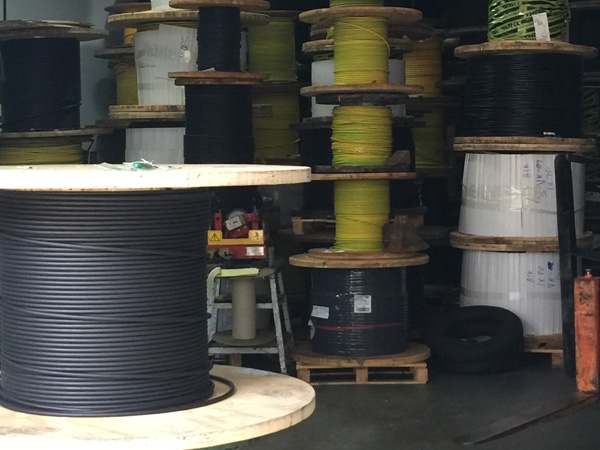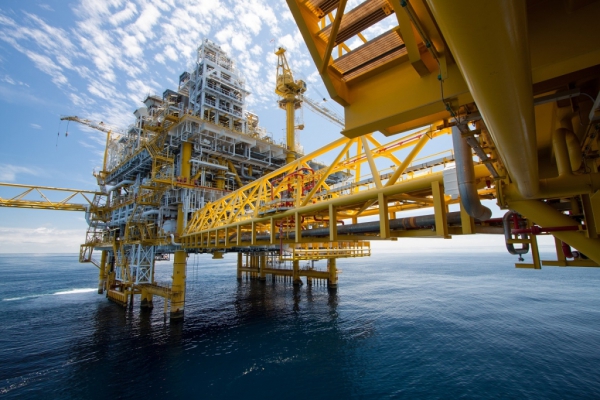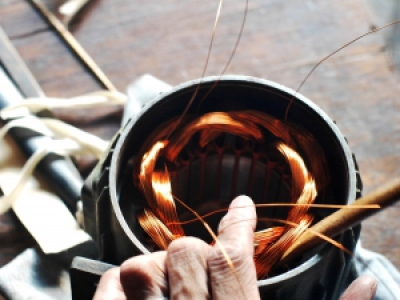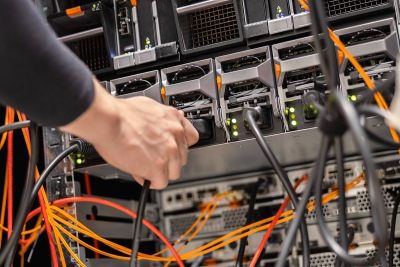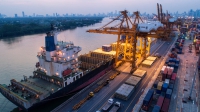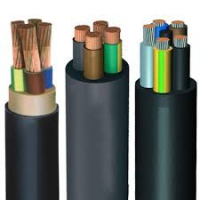
BLOG (9)
- Bare copper (สายทองแดงเปลือย)
ลักษณะ: เป็นสายทองแดงเปลือยที่ไม่มีการเคลือบผิวใด ๆ
ข้อดี:
- นำไฟฟ้าได้ดีเยี่ยมเนื่องจากเป็นทองแดงบริสุทธิ์
- ราคาถูกกว่าสาย Tinned copper (สายทองแดงเคลือบดีบุก)
ข้อเสีย:
- เกิดออกซิเดชั่น (Oxidation) ได้ง่ายเมื่อสัมผัสกับอากาศและความชื้นทำให้เกิดความต้านทานไฟฟ้าเพิ่มขึ้นและลดประสิทธิภาพการนำไฟฟ้า
- ไม่เหมาะกับสภาพแวดล้อมที่มีความชื้นสูงหรือมีสารเคมีกัดกร่อน
- บัดกรีได้ยากกว่าสาย Tinned copper (สายทองแดงเคลือบดีบุก)
- Tinned copper (สายทองแดงเคลือบดีบุก)
ลักษณะ: เป็นสายทองแดงที่เคลือบผิวด้วยดีบุก
ข้อดี:
- ป้องกันการเกิดออกซิเดชั่นได้ดี (Oxidation) ทำให้คงประสิทธิภาพการนำไฟฟ้าได้นานกว่า
- ทนทานต่อสภาพแวดล้อมที่มีความชื้นและสารเคมีกัดกร่อนได้ดีกว่า
- บัดกรีได้ง่ายกว่าสาย Bare copper (ทองแดงเปลือย)
ข้อเสีย:
- ราคาสูงกว่าสาย Bare copper (ทองแดงเปลือย)
- การนำไฟฟ้าอาจลดลงเล็กน้อยเนื่องจากมีชั้นดีบุกเคลือบอยู่
การเลือกใช้:
- Bare copper (ทองแดงเปลือย):
เหมาะสำหรับงานเดินสายไฟภายในอาคารที่แห้งและไม่มีสารเคมีกัดกร่อน หรือในงานที่ต้องการการนำไฟฟ้าสูงสุดและไม่กังวลเรื่องการเกิดออกซิเดชั่น (Oxidation) เช่น งานระบบกราวด์
- Tinned copper (ทองแดงเคลือบดีบุก):
เหมาะสำหรับงานเดินสายไฟภายนอกอาคาร, ในสภาพแวดล้อมที่มีความชื้นสูง, หรือในงานที่ต้องการความทนทานต่อการกัดกร่อนและการเกิดออกซิเดชั่น (Oxidation) เช่น งานเดินสายไฟในโรงงานอุตสาหกรรม, งานเดินสายไฟในเรือ หรือในงานที่ต้องการการบัดกรีที่ง่าย
สรุป:
สาย Bare copper (ทองแดงเปลือย) มีข้อดีที่การนำไฟฟ้าดีเยี่ยมและราคาถูก แต่ก็เกิดออกซิเดชั่น (Oxidation) ได้ง่าย ส่วนสาย Tinned copper (ทองแดงเคลือบดีบุก) มีข้อดีที่ป้องกันการเกิดออกซิเดชั่น (Oxidation) ได้ดีและทนทานต่อสภาพแวดล้อมต่างๆ แต่ก็มีราคาสูงกว่า การเลือกใช้ขึ้นอยู่กับลักษณะงานและสภาพแวดล้อมที่จะใช้งาน
คำแนะนำ:
หากไม่แน่ใจว่าควรเลือกใช้สายชนิดใด ควรปรึกษาช่างไฟฟ้าผู้เชี่ยวชาญเพื่อให้ได้คำแนะนำที่เหมาะสมกับงาน
Equipment Maintenance: What You Need to Know about Your Offshore Platform

An offshore platform is considered one of the most challenging work environments in the world. Unlike traditional workplaces, its surroundings present several issues that put individuals working there at risk. There is a high standard for safety, the responsibility for which mainly falls on the shoulders of maintenance engineers.
Because of the limited space and the remote location of these platforms, there is a need to make sure all systems are performing optimally. Aside from this, any issues can result in downtime that will disrupt operations on the platform. By understanding the challenges of this work environment, you can develop solutions that will keep your team safe and productive.
Current Challenges
Whether you work on an oil rig or an offshore wind farm, some challenges apply to all types of offshore platforms. Familiarizing yourself with these will help you identify red flags from the onset, allowing you to launch solutions immediately.
Unpredictable Weather
Although this is a given, many maintenance engineers fail to prepare their offshore power cables for sudden weather changes. When this happens, you have to find the malfunction immediately to fix it. It puts you and your team at risk, especially if it’s still raining heavily or the winds are still strong.
Change in Temperature
Offshore platforms are prone to experiencing sudden and severe temperature changes. When power cables and other equipment are not treated and protected, their performance is significantly affected.
Complex Repairs
These types of repairs often require special tools and training. There are two types of damage to power cables: physical breakage and performance degradation.
- Physical breakage will need you to cut off the damaged parts before splicing the remaining parts together.
- Performance degradation is more time-consuming because it requires you to find the affected area’s exact location.
Potential Solutions

Consider reviewing your current processes to identify potential problems and areas of improvement. The following are possible solutions to the challenges mentioned. Determine if they can be included in your new strategies.
Regular Inspection
Whether your offshore platform has a team on-deck or not, consider creating a regular schedule to inspect the systems and other equipment. In doing this, you can identify potential problems before they can affect the platform.
Repairs and Replacements
Take note of older cables and other equipment. Determine if any parts need to be repaired or replaced during your inspection. By pre-empting these tasks, you avoid facing problems that grew because they were left to fester.
High-Quality Equipment
An offshore platform is one of the last places to cut corners. When you’re carrying out repairs and replacements, make sure you’re using tools and equipment that are designed for the environment. These days, there are world-class power cables that are also cost-effective.
Cable Source is a leading supplier and stockist of high-quality cables and wiring. We’ve partnered with the world’s leading manufacturers to bring Singaporeans effective solutions to their offshore platform needs.
Contact us for details about our products.
Copper: Still Best for Power Cables
Those acquainted with the properties of metals that can be used for power cables will tell you that there are other alternatives to copper. However, copper remains the number one choice as the main component for industrial power cables, and for good reason. Here’s why the alternatives pale in comparison to copper, and why it remains the industry’s top pick for power cables.
1. It is Thermal-Resistant
Copper has a lower thermal expansion coefficient, so it contracts less when ambient temperatures are low, and expands less as ambient temperatures rise. Cables can also contract or expand as the temperature fluctuates with the current it carries. It is important for a cable material to be less affected by temperature, as this reduces the risk of breakage in the joints of cables and lessens the tendency of the cable to sag or become frayed. Copper wires or cables are also less likely to overheat, melt insulation and surrounding structures, or spark, thereby decreasing the risk of fires. The thermal-resistant quality of copper makes it easier and less costly to maintain, and also serves as a valuable safety measure.
2. It is Extremely Ductile
Copper can be easily formed into very long, thin strands of wire. Its tensile strength is also high, so it can be twisted, bent, spooled, and can take a lot of wear and tear, without breaking. Thus, it is useful across a variety of applications.
3. It is Highly Conductive
The main characteristic that makes copper a popular choice for power cables is its high conductivity.
Copper is the second most conductive metal available, just a notch lower than silver. With high conductivity comes low resistivity or resistance to electrical current.
4. It is Relatively Inexpensive
Thanks to its resistance to expansion or contraction with changes in temperatures, copper is less likely to be damaged and needs less maintenance or repair work. This also means that fires can be avoided, making copper a material with a built-in safety measure that saves money in the long-term. Its highly conductive properties also enable copper to be utilised for cables having a smaller diameter, so less material is needed to transmit heavy electrical loads. Its high ductility likewise makes copper easier to form and shape into the required length and thickness, and it is easier to solder—repairs or upgrades to damaged copper cables take less time and effort. All the favourable qualities of this material translate to more savings per square foot.
5. It Still Performs Better Than its Alternatives
The best alternatives to copper are aluminium, silver, and gold. Silver is the most conductive material available, but its vulnerability to tarnishing does not allow for heavy-duty, industrial applications. It must be noted that for you to fully reap the conductive benefits of silver, it must be pure—a requirement that makes it quite a costly option. Gold is another alternative, but due to its high price and low melting point, it is not a cost-efficient option, either. Of the three possible alternative materials with the highest conductive properties, aluminium is the most practical choice, but it has its drawbacks. Although it’s recommended for use in overhead power cables, aluminium is brittle and tends to break more easily than copper. Its conductivity is lower, so you will need to use thicker aluminium cables to bear the same load that thinner copper cables can handle. Aluminium also corrodes easily, and its conductivity is severely reduced once aluminium oxide forms on the cables. In the case of copper, when corrosion sets in, the layer of copper oxide actually serves as a protective layer that shields the copper from further corrosion, without hampering its conductivity. For your power cables in Singapore, you should still rely on copper cables from a trusted experienced supplier.
In terms of durability, safety, and practicality, copper still wins over the other alternative materials for constructing your power cables.
Did you find this article insightful? You can find more useful information about power and other types of cables here.
At Cable Source, we have a wide selection of cables for industrial, marine, oil and gas, offshore and petrochemical applications. Apart from our diverse range of cables, we offer comprehensive logistical support and after-sales services that your business needs. Contact Cable Source for all of your industrial and shipboard cables in Singapore. Contact Us
Five Essential Factors to Proper Power Cable Selection and Application
Electrical and mains power cables are present in all applications that require power or lighting. When selecting a cable system, additional knowledge is required for smooth operations. This knowledge consists of the cable system’s service conditions, construction, type of load served, mode of operation, maintenance and the like.
Whatever industry you’re in, here are the key factors in selecting the most suitable cable system for your application.
Cable installation
Power cables in Singapore can be used for indoor or outdoor installations, depending on the load served and the distribution system. A good understanding of local conditions, installation personnel and maintenance crews is vital to ensure that the cable systems will operate properly. Often, cable insulation becomes weakened or damaged during installation due to incorrect application of pulling tensions. If you have a competent installation and maintenance team, you reduce network downtime and there’s a lower possibility of connectivity errors.
Cable construction
The type of cable construction required for a specific installation bears upon your selection of power cable. Cable construction, meanwhile, involves conductors, cable arrangement, insulation and finish covering.
- Conductors — Conductive materials such as aluminium and copperare used based on their workmanship, environmental conditions they will be subjected to and maintenance.
- Cable arrangement — Conductors can be arranged to form single-conductor or three-conductor cables. Single conductors are relatively easier to install and splice. They can also be used to form multiple cable circuits. On the other hand, three-conductor cables contain ground wires that provide the lowest impedance path.
- Insulation and finish covering— This is generally based on the installation type, service conditions, ambient operating temperature and type of load served. In some installations, unusual conditions may be present such as a corrosive atmosphere, presence of oil and solvents, insect and rodent hazards, extreme temperatures and presence of ozone.
Cable operation
The cable’s insulation needs to withstand the voltage stresses experienced during various operating conditions. Cable insulation selection is based on the appropriate phase-to-phase voltage and the general system category is classified as 100%, 133% or 173% insulation levels.
Cable size
Cable size selection is dependent upon the following factors: current carrying capacity, short circuit rating and voltage regulation.
- Current carrying capacity — this is based on the cable’s thermal heating
- Short circuit rating — cable size is checked for its capability to withstand short circuits and thermal damage
- Voltage regulation — voltage drops are checked to ensure correct load voltage
Shielding
Shielded power cables offer more protection than standard unshielded ones. In power systems where there is no metallic or shield covering, the electric field is partly in the insulation system and partly in the air. If the electric field is intense, as in the case of medium and high voltage, surface discharges will occur and cause air particle ionization. The shielding in power cables mitigates the potential of serious safety hazards and increases the reliability of the cable circuits.
High-Grade Offshore Power Cables from Cable Source
Cable Source is an established supplier of industrial and marine cables in Singapore. All our products are sourced from world-leading brands to provide you with the best solutions in the industry.
Contact us to discuss pricing, quotations and shipments.
Marine Shipboard Cables: Essential Functions and Features
The sea can be a challenging environment. From the salt in the water to the motion of the water itself, the sea presents some of the biggest challenges to a marine vessel.
Protection is important not just for the hull and outer surfaces of a vessel but also for the inner electrical components. Extreme temperatures combined with the corrosive effects of moisture, oil and salt quickly lead to the degradation of components essential to your system.
The key to a long-lasting system for your marine vessel is the use of the right cable. When setting up a ship, make sure to use only a durable marine shipboard cable. This type of cable is specially designed to handle the marine environment.
Where are Shipboard Cables Used?
Marine shipboard cables are essential components used for several functions in boats, ships and yachts. These include:
-
Communication
Shipboard cables are used in various communication devices within the vessel.
-
Control Systems
With today’s ships becoming more automated, shipboard cables are essential in enhancing the vessel’s control systems.
-
Instrumentation
Marine shipboard cables are found in various instrumentation devices, such as sensors, that update the crew of the vessel’s condition at all times.
-
Power
Shipboard cables help retain and transmit the power to the necessary devices of a vessel.
What Makes Marine Shipboard Cables Important?
What makes shipboard cables reliable that they are used in several functions of a marine vessel? Here are some of their noteworthy features:
-
Resistant to Corrosion
A common concern when it comes to cabling in marine vessels is the risk of corrosion. Marine shipboard cables contain tinned copper that make it more resistant to corrosion compared to cables meant for shore use. Tinning strengthens the copper’s natural properties, making it resistant to high temperatures, humidity and wet environments.
-
Flexibility
Shipboard cables contain a tough yet flexible Low Smoke Zero Halogen, which is essential when the cables are run through tight spaces. This flexibility provides easier cable handling and shorter installation time.
-
Insulation
The Low Smoke Zero Halogen also protects the cable against elements such as fire, gas, humidity and oil. This ensures that the shipboard cable keeps the systems running without any problems or risks.
-
Size
Marine shipboard cables are larger than other instrument’s cables, since they contain more copper. When a cable has more copper, it has a better carrying capacity, or the ability to accommodate a higher amount of electrical current.
Singapore’s Trustworthy Cable Solutions Provider
Marine shipboard cables are essential in making sure a marine vessel functions efficiently and is safe from the harsh conditions of the sea. When buying cables, make sure to get them from a reliable supplier.
At Cable Source, we distribute a wide selection of cables for industrial, marine, oil and gas, offshore and petrochemical industries. We are committed to helping your company with our complete range of cables, comprehensive logistic support and attention to your business needs.
Our high-performance shipboard cables will help improve the efficiency of your business operations. We deliver cables to facilities anywhere in the Asia Pacific.
Contact Cable Source today for industry-leading industrial and shipboard cables in Singapore. To get an instant quote, Contact Us
On Choosing Cable Suppliers: A Deeper Understanding of the Shipbuilding Industry Is a Must
The sheer scale — and expense — of a shipbuilding project means there’s no room for underperforming components. Shipbuilding, however, presents several challenges to shipyards. To manufacture reliable watercraft, a shipyard must employ the latest marine technology, as well as utilise cost-effective materials. On top of that, marine environments host extreme temperatures, salt, and high moisture, which are all the bane of metal components.
As such, shipyards need to vet cable suppliers in Singapore extensively to make sure they procure the right type of marine cables. These are, after all, no ordinary component; they have to be lightweight yet highly efficient. And, because they’ll be installed in narrow spaces, they must be flexible. Ideally, they’re halogen-free and fire-resistant, too.
These special requirements are best met by a cable supplier that knows the shipbuilding industry inside and out. So, choose cable suppliers in Singapore that understand how ships come to be, from the design stage to the turnover.
Obtain Cables that Best Fit the Marine Environment
Cable suppliers that understand the shipbuilding industry will carry an extensive range of marine cable options.
Marine cables are especially designed to protect the internal components from damage from elemental exposure and chemical reactions from salt, oil, and water. Because it is built from tinned copper, these cables are more corrosion-resistant than ordinary ones. Moreover, marine cables contain more copper than automotive cables with the same AWG units, which means it has a better current carrying capacity.
Cable suppliers that work with shipbuilders will acknowledge that, in many circumstances, marine cables are better alternatives to Society of Automotive Engineering (SAE) cables, because they are more flexible and, consequently, better adapt to a boat’s powerful movements.
In sum, adept marine cable suppliers know a shipyard’s exact needs and are prepared with the right cabling solutions. They can also dispense technical advice regarding on-site challenges.
Comply with Industry Regulations
A cable supplier that understands the shipbuilding industry is familiar with the industry standards used by shipyards in Singapore. Cable Source, for instance, complies with:
- International Electrotechnical Commission (IEC)
- British Standard (BS)
- Conformité Européene (CE) Mark
- Keuring van Elektrotechnische Materialen te Arnhem (KEMA)
- Verband der Elektrotechnik (VDE)
On top of that, our marine cables are approved by several ship classification societies, like the Bureau Veritas (BV), American Bureau of Shipping (ABS), Nippon Kaiji Kyokai (NKK), Det Norske Veritas (DNV) and Germanischer Llyod (GL), among others.
Procure Cables Efficiently
If you work with a trusted cable supplier, you’ll benefit from its streamlined processes. Because they have worked with shipyards, they’ve established procedures that make procurement fast, easy, and convenient for shipbuilders. They’ve also cultivated close relationships with principal manufacturers, so their cables are competitively priced.
This means a lower chance of downtime and delays; your project and MRO delivery schedule are more likely to be followed. In case of delays, however, we have robust warehouses that can store your cables safely.
Moreover, experienced cable suppliers boast high inventory levels and a product catalogue that goes beyond marine cables. We can provide offshore cables for your offshore facilities, flexible control cables, lead sheathed cables, and more.
Choose a Trusted Cable Supplier
When a project as big as shipbuilding is concerned, turn to a cable supplier that’s seasoned in providing for shipyards. Work with Cable Source for extensive technical and logistical support, diverse product line, and efficient procurement.
Send us an enquiry today.
Marine Grade Cables: The Cables Ships Need for Smooth Sailing
The seas present an unpredictable and unforgiving environment where elemental exposure, vibration and chemical reactions can deteriorate the performance of a ship’s components. This is why protection is essential for vessels that spend majority of their time sailing through potentially rough seas. Protection not only applies to the hull and the ship’s outer surfaces but also to the internal components such as wiring. This is where marine cables save the day.
Marine cables, often called shipboard cables, are specifically designed to handle the conditions of the marine environment. Here’s a rundown of their major benefits that you otherwise won’t experience from standard wires and other non-marine grade cables.
Corrosion Resistance
Cables with plain copper conductors are commonly used in low voltage applications but when they are exposed to environments with high levels of moisture, such as the seas the copper will corrode over time and develop an oxide layer that is black or dark brown in colour. In salt water environments, copper will also develop verdigris, a copper carbonate layer that appears as a green or blue coating. Coupled with oxidisation, the verdigris will lead to poor electrical conductivity and increased resistance in the cable. Over time, this problem can worsen and result in devastating electrical problems that will require stripping or replacing large sections of the cable.
Marine grade cables prevent this from happening because they’re manufactured with tinned copper. Tinned copper is copper coated by tin, a base alloy that provides an excellent barrier against water, light and oxygen. It strengthens the copper’s natural properties, making it better equipped to resist wet environments, high temperatures and humidity, which is why it is typically used to manufacture high quality marine cables.
Higher Flexibility and Efficiency
In marine wire stranding, each individual strand is tinned and the strands are much finer. The fine stranding makes the cables exceptionally flexible, allowing them to better survive in a ship that’s constantly moving and vibrating. This flexibility also makes marine grade cables superior to standard wires when dealing with the inherent flexing that occurs in vessel cable wire runs.
Additionally, marine grade cables contain more copper than standard cables. When a cable has more copper, it can carry a higher current capacity and reduce electrical resistance. This enables the delivery of more amperage for the given gauge size.
Safety
Marine cables, especially the ones from Cable Source, are flame retardant, halogen free and contain low toxicity. These features fight to keep the elements away and prevent premature failures, eliminating the stress of worrying about your cables’ exposure when your ship is sailing on rough seas.
Ensure Smooth Sailing with High Quality Marine Cables from Cable Source
Investing in marine grade cables can pay off in the long run as they reduce downtime and ensure that your operations run smoothly.
Cable Source is a trusted stockist and distributor of marine grade cables manufactured specifically for the machinery standards and harsh working environments of ships and other marine facilities. They can withstand constant exposure to elements such as oil, acids, humidity, heat and cold.
For more information and inquiries about our marine grade cables, contact us
Neoprene Cables: A Better Alternative For Many Applications
Industries rely on cables to power their equipment. Often, it is the case that the average rubber cable commonly found in homes and retail spaces is not enough for the heavy-duty jobs that many industries do. This is where neoprene cables come in.
When heavy duty cabling is required neoprene cables are a better alternative to use. Neoprene cables are affordable and readily available. They come in various sizes so they can be used in almost any application. The material’s durability and resistance to the elements make it a good investment.
Durable
Neoprene can withstand degradation better than other natural or synthetic rubber. It is highly resistant to abrasions and scratches and does not easily react with chemicals. This inertness makes it ideal for applications in the petrochemical and manufacturing industries.
Neoprene cables can also be used for many types of mobile electrical equipment. Using substandard cables that are easily worn and cannot keep up with the standards of daily use can be very risky, especially for heavy-duty industries such as the marine and industrial sectors.
Resistant to a lot of elements
The physical and chemical properties of neoprene make it resistant to many elements. Neoprene will not physically degrade when subjected to high temperatures. When the temperature does reach a level high enough to degrade neoprene, the material will not melt nor stretch but will harden instead.
Neoprene is not just effective in high temperatures but also in low temperatures. It can maintain its flexibility even when subjected to cold temperatures. Neoprene cables can be safely used at much lower temperatures compared to PVC cables.
The material is also water-resistant, which makes it perfect for underwater applications. It is able to resist a number of elements, including oxidation, sunlight, sand, snow and dust.
Such resistance makes neoprene cables the ideal material to be used as an energy conduit towards electrode supports. For control and communication, it can be used for smooth signal transmission in remote and direct-controlled machine tools.
Provides cushioning and protection
Depending on the use, neoprene provides appropriate cushioning and protection for the inside material of the cable. Whether they will be used for relatively light jobs such as low voltage installations indoors and outdoors to jobs that will expose them to high mechanical strain, these cables can do the job without breaking.
Neoprene cables are used for cable winding reels, including cranes, conveyors and mining equipment.
For your neoprene cable needs
Cable Source is a highly trusted neoprene cable supplier in Singapore. We provide cables for different industries, including the industrial sector, oil & gas, petrochemical, offshore and marine industries. We make sure you get the type of cables you need, they’ll be cost effective and delivered on time.
Our team of cable specialists have years of experience in the industry and can provide solutions and advice to you for any cable requirement or challenges you might face in your project.
For more information about our company and our products, contact us here.
Boat Wires 101: SAE Wires vs Marine Wires
Wires can be a hot topic of debate in the boating community. Some are staunch of advocates of marine-grade wires, while others are convinced that SAE wires (short for Society of Automotive Engineering) are more than up for the task. To be sure, both types of wire can power both land- and water-based engines, and the constant innovations and improvements being done to their designs and functionality allows them to become interchangeable, in many cases. But wires aren’t created equal, and to someone who oversees and manages marine projects, there is a clear winner in the perennial debate over SAE wires vs. marine cables.
What are SAE and Marine Cables?
SAE cables are designed primarily to power automotive accessories and devices. They are a general-purpose thermoplastic (GPT) insulated primary wire built to the society’s standards, and labelled according to the amount of voltage they carry. As SAE wires are specifically created for land-based engines, few SAE cables can sufficiently powerboats, whose voltage requirements are obviously much higher compared to cars and motorcycles. Of note, only SAEs rated J378, J1127, and J1128 can conduct enough voltage to operate water vehicles, and they should still be used only as an absolute last resort.
On the other hand, marine cables are designed precisely to be used for boats, generally used for the circuit wiring on shipboards, which is why they are also sometimes referred to as ‘shipboard cables’. They are built to handle higher wattages required by boats, and they are designed to withstand corrosion better than SAE cables. The strands in the wire are firmer and finer, making them more flexible and resilient to a boat’s more intense movements, and they are built to endure the harsher conditions on water where oil, moisture, and heat are stronger. Marine cables are built with tinned copper components, which conducts electricity better, and suffer from less oxidation than bare copper wires.
Can You Use Automotive Wires for Your Boat?
Yes, you technically can use automotive wires for your boat, but it is not ideal. Marine wires are finer, and each individual strand is tinned, which are features necessary for surviving in the rougher conditions of open water. Although these characteristics also make marine cables more expensive than their land counterparts, it is ultimately in your best interest to invest in marine wires to ensure your trips are smooth-sailing.
As mentioned above, SAE cables can only do so much, and only a select few are actually usable in the water. In addition, the risks that could come with them, like short-circuiting or breaking down in the elements, are not worth the few dollars you save in trying to cut corners, and the repairs can actually set you back much further. Getting the right tools for your machine is still essential in making sure your ship runs tight.
Using Marine Cables Has Benefits
Keep in mind that your safety and security comes above all else, so be sure to have a reliable electrical system on board. Open waters are much more difficult to navigate than land, so install the right cables, components, and connections, and don’t take shortcuts when wiring your boat. Also, make sure that all equipment are up to grade, and that they are regularly maintained.
If you’re looking for a specific marine wire for your boat, Cable Source has got you covered. We offer some of the best marine-grade cables in the entire Asia Pacific, and our products are made to guarantee the safety of you, and everyone else aboard. Chat us up today to learn more about our products.


